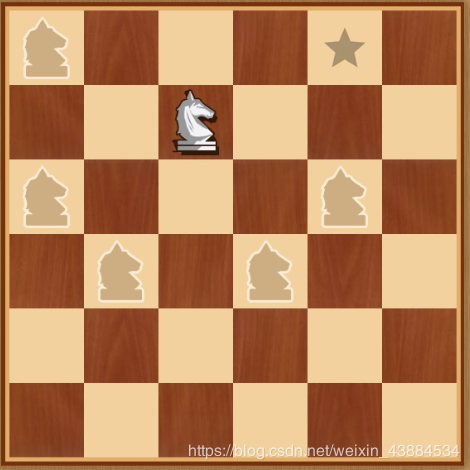贪心算法
介绍:
基本要素
贪心选择
最优子结构

思想
过程
-
建立数学模型来描述问题;
-
把求解的问题分成若干个子问题;
-
对每一子问题求解,得到子问题的局部最优解;
-
把子问题的解局部最优解合成原来解问题的一个解。
算法特性
-
随着算法的进行,将积累起其它两个集合:一个包含已经被考虑过并被选出的候选对象,另一个包含已经被考虑过但被丢弃的候选对象。
-
有一个函数来检查一个候选对象的集合是否提供了问题的解答。该函数不考虑此时的解决方法是否最优。
-
还有一个函数检查是否一个候选对象的集合是可行的,也即是否可能往该集合上添加更多的候选对象以获得一个解。和上一个函数一样,此时不考虑解决方法的最优性。
-
选择函数可以指出哪一个剩余的候选对象最有希望构成问题的解。
-
最后,目标函数给出解的值。
-
为了解决问题,需要寻找一个构成解的候选对象集合,它可以优化目标函数,贪婪算法一步一步的进行。起初,算法选出的候选对象的集合为空。接下来的每一步中,根据选择函数,算法从剩余候选对象中选出最有希望构成解的对象。如果集合中加上该对象后不可行,那么该对象就被丢弃并不再考虑;否则就加到集合里。每一次都扩充集合,并检查该集合是否构成解。如果贪婪算法正确工作,那么找到的第一个解通常是最优的。
背包问题
public class Greed { /*贪心算法:在对问题求解时, 没一部的选择都是最优的选择*/ public static void main(String[] args) { System.out.println("121212"); //创建广播电台 Map<String, HashSet<String>> broadcasts = new HashMap<String, HashSet<String>>(); HashSet<String> hashSet1 = new HashSet<>(); hashSet1.add("北京"); hashSet1.add("上海"); hashSet1.add("天津"); HashSet<String> hashSet2 = new HashSet<>(); hashSet2.add("广州"); hashSet2.add("北京"); hashSet2.add("深圳"); HashSet<String> hashSet3 = new HashSet<>(); hashSet3.add("成都"); hashSet3.add("上海"); hashSet3.add("杭州"); HashSet<String> hashSet4 = new HashSet<>(); hashSet4.add("上海"); hashSet4.add("天津"); HashSet<String> hashSet5 = new HashSet<>(); hashSet5.add("杭州"); hashSet5.add("大连"); broadcasts.put("K1",hashSet1); broadcasts.put("K2",hashSet2); broadcasts.put("K3",hashSet3); broadcasts.put("K4",hashSet4); broadcasts.put("K5",hashSet5); /*allAreas存放所有的地区*/ HashSet<String> allAreas = new HashSet<>(); allAreas.add("北京"); allAreas.add("上海"); allAreas.add("天津"); allAreas.add("广州"); allAreas.add("深圳"); allAreas.add("成都"); allAreas.add("杭州"); allAreas.add("大连"); //存放选择的电台集合 ArrayList<String> selects = new ArrayList<>(); HashSet<String> tempSet = new HashSet<>();//交集 //最大覆盖电台数 String maxKey = null; while (allAreas.size()!=0){ maxKey=null;//置空 for (String key : broadcasts.keySet()){ tempSet.clear(); //取出key 对应的地区 HashSet<String> areas = broadcasts.get(key); tempSet.addAll(areas); //取交集 tempSet.retainAll(allAreas); if (tempSet.size()>0 && (maxKey ==null||tempSet.size()>broadcasts.get(maxKey).size())){ maxKey =key; } } if (maxKey!=null){ selects.add(maxKey); //将广播电台成all清除; allAreas.removeAll(broadcasts.get(maxKey)); } } System.out.println("得到的选择结果 "+selects); } }
马踏棋盘


public class ma { //马在一个点时,能走的方向有8个; static final int[] fx = {-1,-2,-2,-1,1,2,2,1}; static final int[] fy={2,1,-1,-2,-2,-1,1,2}; static final int N =8; //棋盘的大小; static int[][] board = new int[N][N];//马走的棋盘; class manode{ int x; //x坐标 int y; //y坐标 int way; //该点有多少种走法; } //定义一个内部类,马所在点的信息; int wayout(int x,int y){ int tx,ty; int count = 0; if(x<0||y<0||x>=N||y>=N||board[x][y]>0){ return -1; } //当点超出边界或者所在的点的值不为0时,返回-1; for(int i = 0;i<N;i++){ tx = x+fx[i]; ty = y+fy[i]; if(tx<0||ty<0||tx>=N||ty>=N){ continue;//如果点的另一个点超出边界时,就continue; } if(board[tx][ty] == 0){ count++;//否则计数器计数; } } return count; }//计算该点的走法有多少种; void sort(manode[] hn,int n){ int i,j,k; manode temp; //临时对象,用来排序交换; for(i=0;i<n;i++){ for(k=i,j=i+1;j<n;j++){ if(hn[j].way<hn[k].way) k=j; } if(k>i){ temp = hn[i]; hn[i] = hn[k]; hn[k] = temp; } } }//将走法的数量进行排序,将最少的走法放在数组的头; void dfs(int x,int y,int count){ int i,tx,ty; manode[] t = new manode[N]; if(count >N*N){ output(); return; } //当count计数器超过64时,打印输出; for(i=0;i<N;i++){ tx = x+fx[i]; ty = y+fy[i]; manode h = new manode(); t[i]=h; t[i].x = tx; t[i].y = ty; t[i].way = wayout(tx,ty); } sort(t,N); for(i = 0;t[i].way<0;i++) ; for(;i<N;i++){ tx = t[i].x; ty = t[i].y; board[tx][ty] = count; dfs(tx,ty,count+1); board[tx][ty] = 0;//遇到死路时,回退回去,并将其变成0; } }//深度搜索与回溯算法; public static void main(String[] args) { int x,y; Scanner input = new Scanner(System.in); System.out.println("please input x,y:"); x = input.nextInt(); y = input.nextInt(); ma test = new ma(); board[x][y]=1; test.dfs(x, y, 2); } void output(){ for(int i = N-1;i>=0;i--){ for(int j = 0;j<N;j++){ System.out.printf("%d\t",board[i][j]); } System.out.printf("\n\n\n"); } System.exit(0); } //打印输出函数; }
publicclass ma {//马在一个点时,能走的方向有8个;staticfinalint[] fx = {-1,-2,-2,-1,1,2,2,1}; staticfinalint[] fy={2,1,-1,-2,-2,-1,1,2}; staticfinalint N =8; //棋盘的大小;staticint[][] board = newint[N][N];//马走的棋盘;class manode{int x; //x坐标int y; //y坐标int way; //该点有多少种走法; } //定义一个内部类,马所在点的信息;int wayout(int x,int y){ int tx,ty; intcount = 0; if(x<0||y<0||x>=N||y>=N||board[x][y]>0){ return -1; } //当点超出边界或者所在的点的值不为0时,返回-1;for(int i = 0;i<N;i++){ tx = x+fx[i]; ty = y+fy[i]; if(tx<0||ty<0||tx>=N||ty>=N){ continue;//如果点的另一个点超出边界时,就continue; } if(board[tx][ty] == 0){ count++;//否则计数器计数; } } returncount; }//计算该点的走法有多少种;void sort(manode[] hn,int n){ int i,j,k; manode temp; //临时对象,用来排序交换;for(i=0;i<n;i++){ for(k=i,j=i+1;j<n;j++){ if(hn[j].way<hn[k].way) k=j; } if(k>i){ temp = hn[i]; hn[i] = hn[k]; hn[k] = temp; } } }//将走法的数量进行排序,将最少的走法放在数组的头;void dfs(int x,int y,intcount){ int i,tx,ty; manode[] t = new manode[N]; if(count >N*N){ output(); return; } //当count计数器超过64时,打印输出;for(i=0;i<N;i++){ tx = x+fx[i]; ty = y+fy[i]; manode h = new manode(); t[i]=h; t[i].x = tx; t[i].y = ty; t[i].way = wayout(tx,ty); } sort(t,N); for(i = 0;t[i].way<0;i++) ; for(;i<N;i++){ tx = t[i].x; ty = t[i].y; board[tx][ty] = count; dfs(tx,ty,count+1); board[tx][ty] = 0;//遇到死路时,回退回去,并将其变成0; } }//深度搜索与回溯算法;publicstaticvoid main(String[] args) { int x,y; Scanner input = new Scanner(System.in); System.out.println("please input x,y:"); x = input.nextInt(); y = input.nextInt(); ma test = new ma(); board[x][y]=1; test.dfs(x, y, 2); } void output(){ for(int i = N-1;i>=0;i--){ for(int j = 0;j<N;j++){ System.out.printf("%d\t",board[i][j]); } System.out.printf("\n\n\n"); } System.exit(0); } //打印输出函数; }






【推荐】国内首个AI IDE,深度理解中文开发场景,立即下载体验Trae
【推荐】编程新体验,更懂你的AI,立即体验豆包MarsCode编程助手
【推荐】抖音旗下AI助手豆包,你的智能百科全书,全免费不限次数
【推荐】轻量又高性能的 SSH 工具 IShell:AI 加持,快人一步
· 10年+ .NET Coder 心语,封装的思维:从隐藏、稳定开始理解其本质意义
· .NET Core 中如何实现缓存的预热?
· 从 HTTP 原因短语缺失研究 HTTP/2 和 HTTP/3 的设计差异
· AI与.NET技术实操系列:向量存储与相似性搜索在 .NET 中的实现
· 基于Microsoft.Extensions.AI核心库实现RAG应用
· TypeScript + Deepseek 打造卜卦网站:技术与玄学的结合
· 阿里巴巴 QwQ-32B真的超越了 DeepSeek R-1吗?
· 【译】Visual Studio 中新的强大生产力特性
· 10年+ .NET Coder 心语 ── 封装的思维:从隐藏、稳定开始理解其本质意义
· 【设计模式】告别冗长if-else语句:使用策略模式优化代码结构